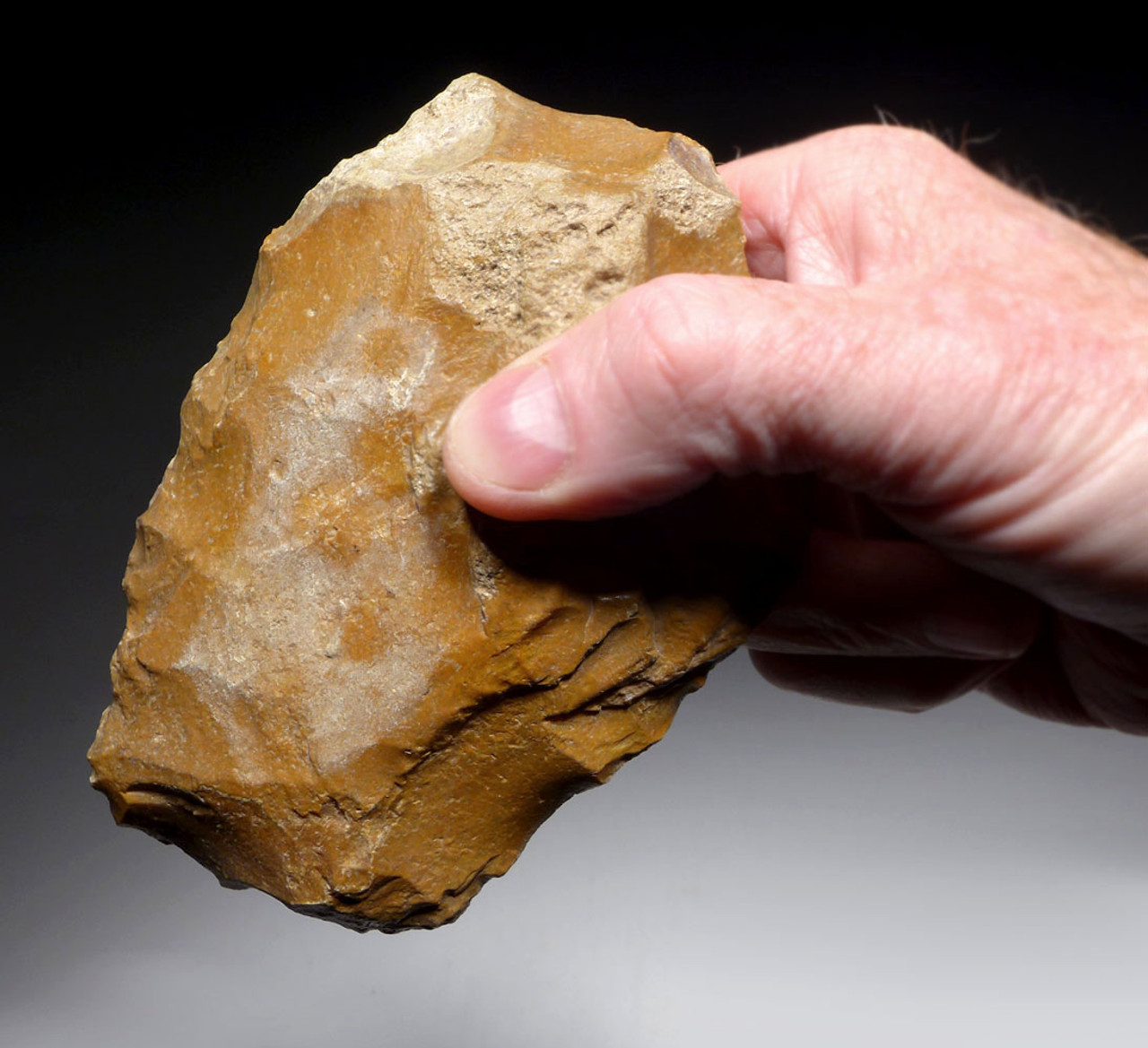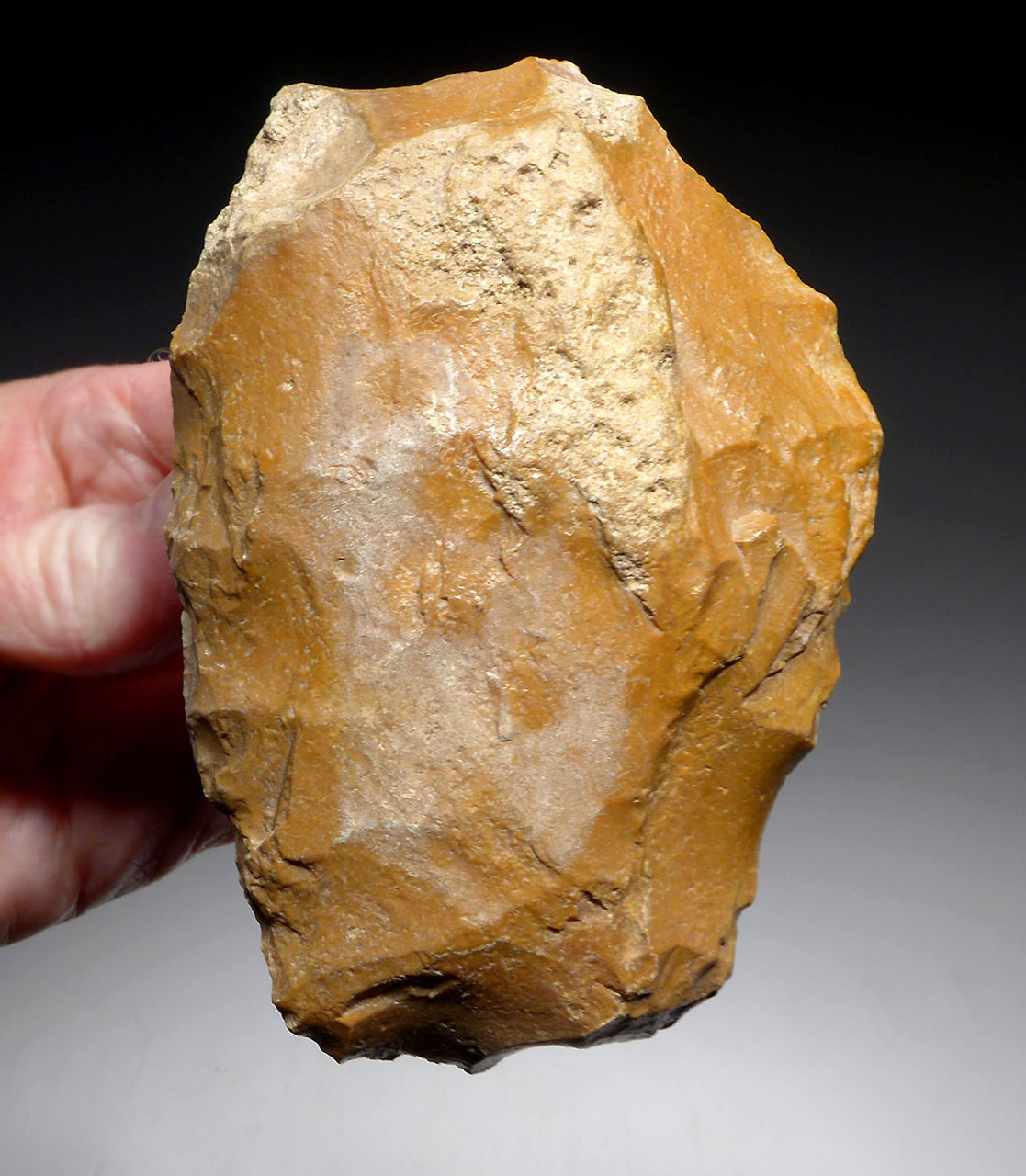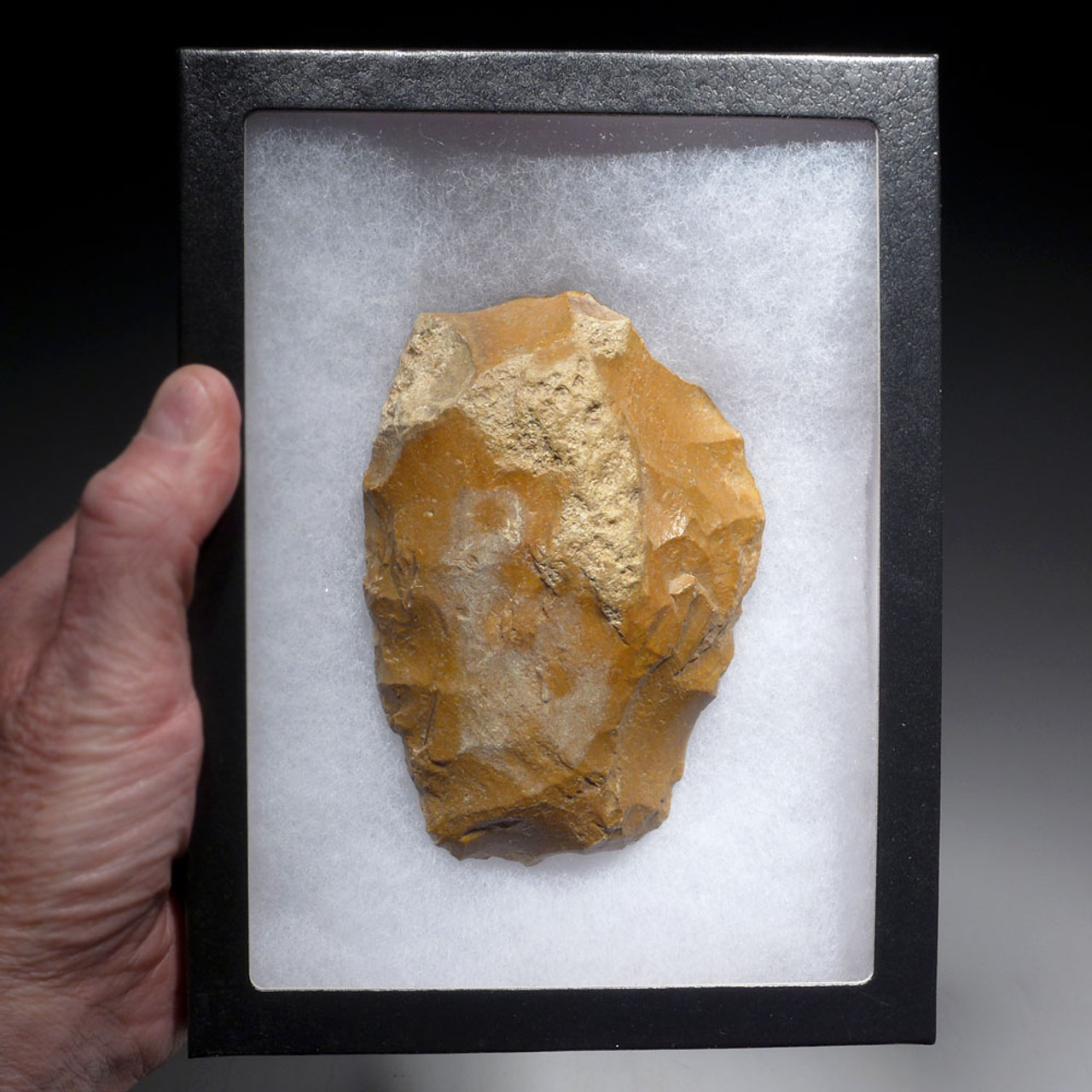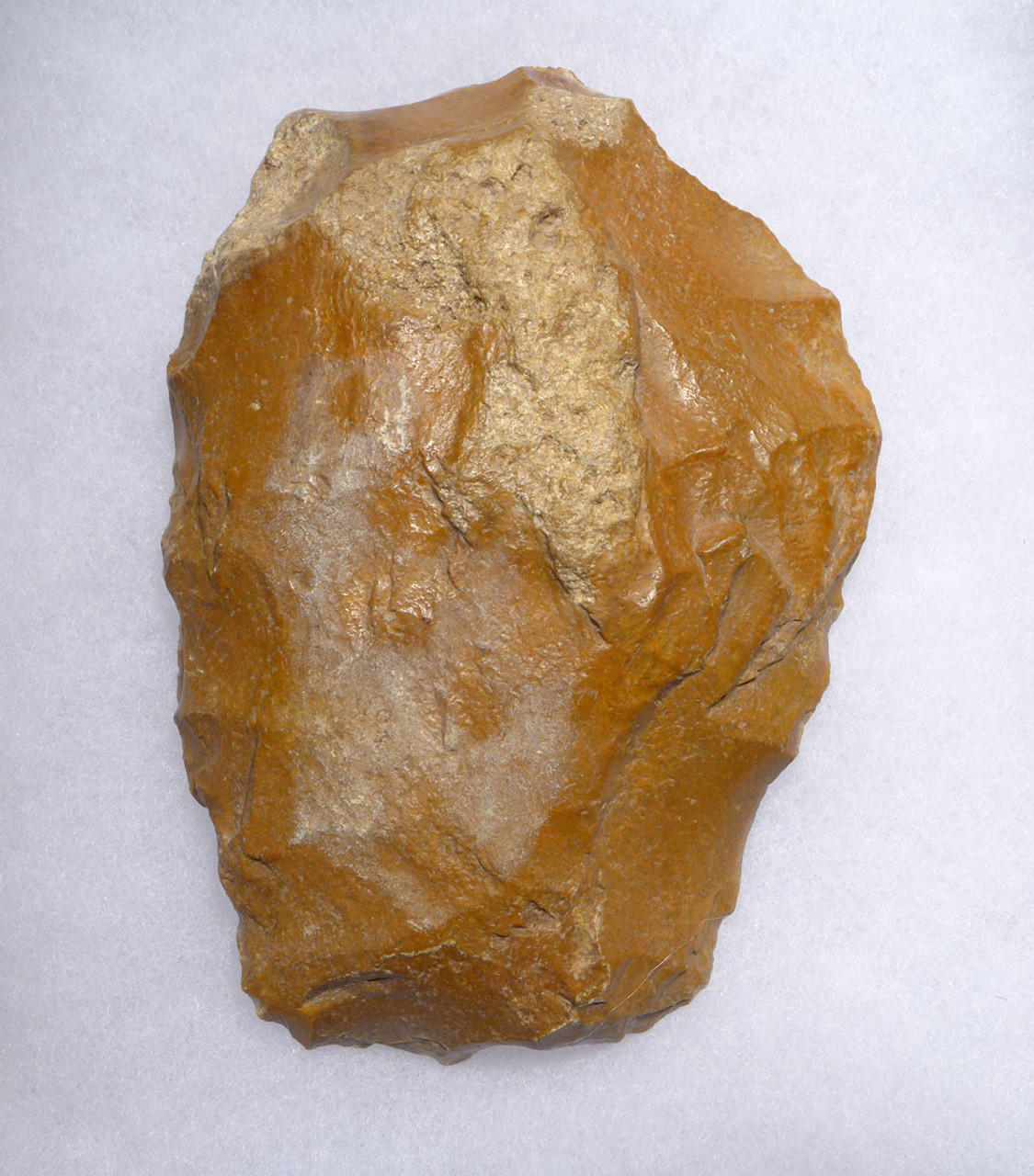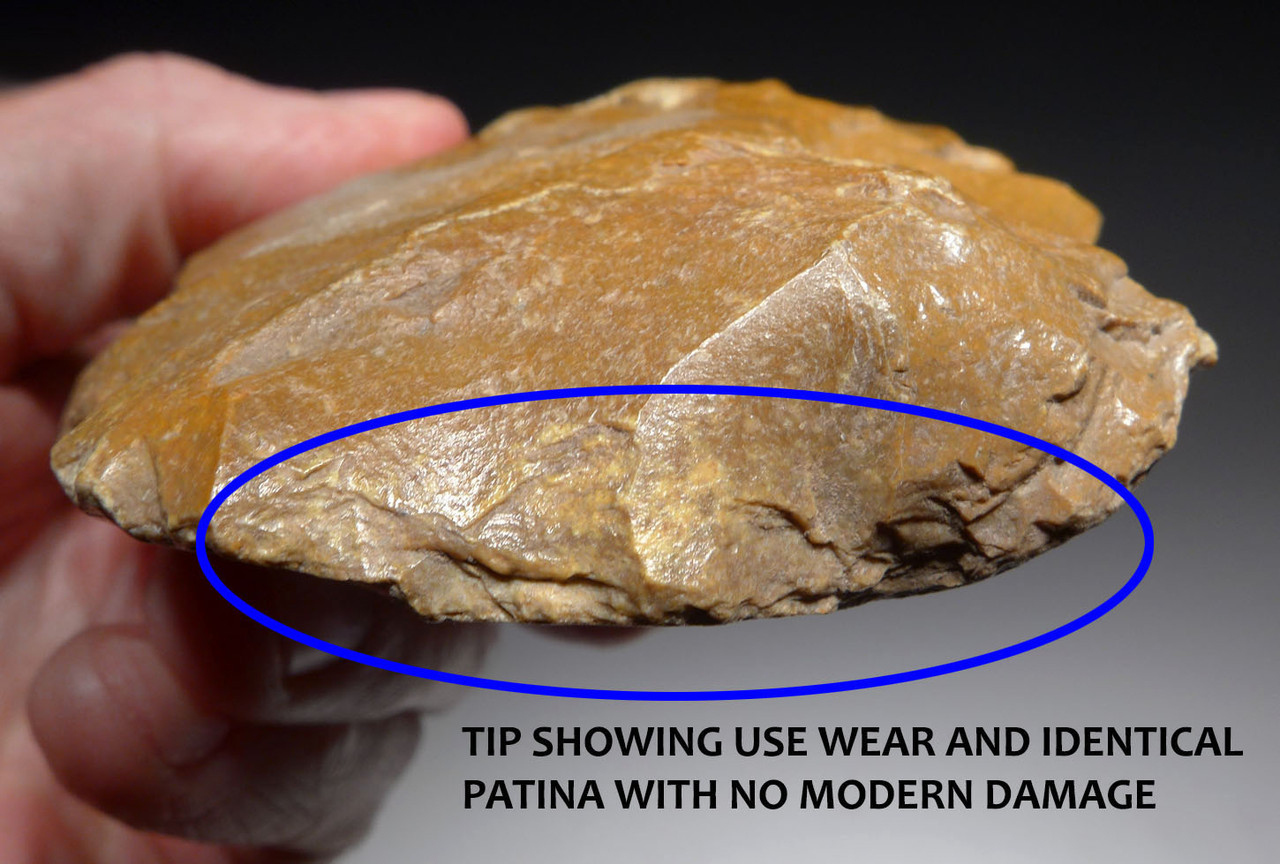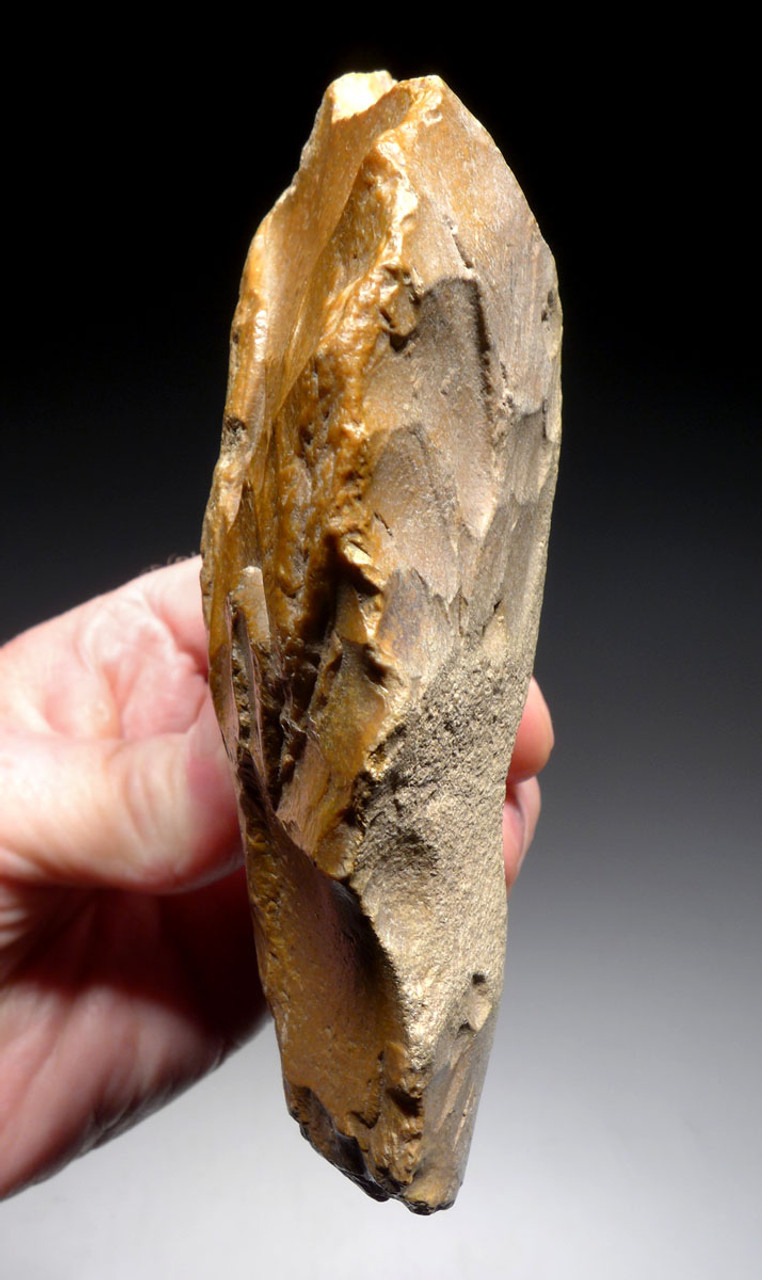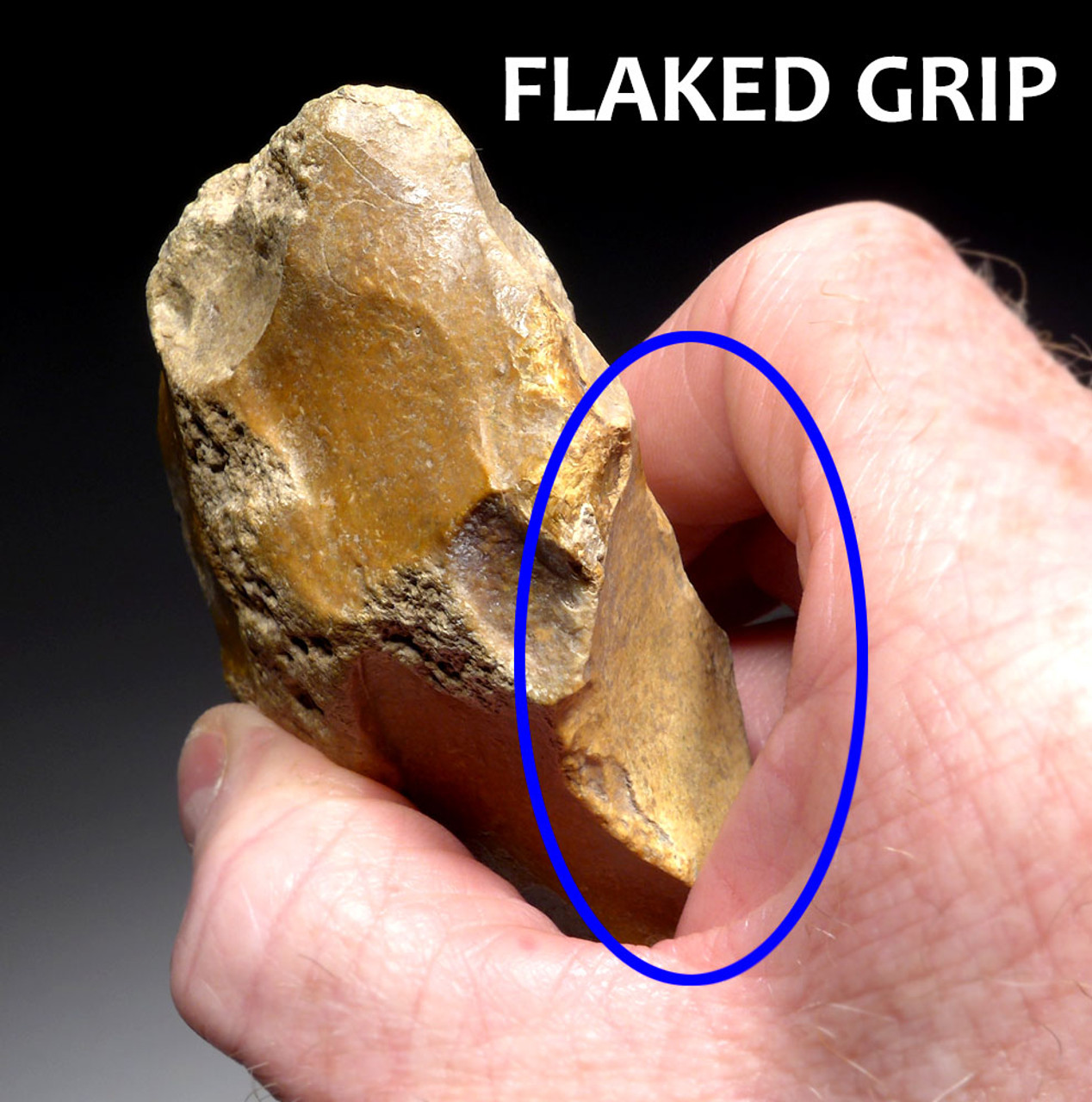Product Description
For comparison prices, please see the "Old World Typology and Price Guide" section of the "OVERSTREET IDENTIFICATION AND PRICE GUIDE TO INDIAN ARROWHEADS" editions 7th, 8th and 9th.
SEE MORE LOWER PALEOLITHIC ACHEULEAN STONE ARTIFACTS
This superb European Acheulean flint bifacial hand axe was fashioned by Homo erectus (H. heidelbergensis), the first humans to occupy Europe. It dates back to the Lower Paleolithic Period, made in the Acheulean Tradition, and was the predominant tool technology of the Homo erectus people in Europe from 1 million years ago to possibly as recent as 130,000 years ago.
Skillfully crafted from golden flint, this hand axe was likely a tool of pride and prestige as the former bright yellow color would have stood out where most flake tools of the time were made of dark and drab flint colors. This hand axe displays primitive human intelligent design in its grip. Two natural concave depressions in the stone surface were oriented to fall where the fingers would be placed when this hand axe was held. The depressions would have served as finger grips to better hold the axe in use. Such an ingenious and resourceful design reflects the high intelligence of the prehistoric Homo erectus people.
The blunt chopping end shows EXTENSIVE use and wear polish, and it was likely used to smash large hunted game animal bones to access the prized bone marrow which was a precious and highly nutritious food of prehistoric humans. The heavy weight and robust but flat-flaked end indicates this was an ideal bone-breaking hand axe, not meant for cutting. Expert flaking can be seen on one side and on the perimeter of the entire hand axe. The light side is from frost exposure and the original Homo erectus tool maker left this surface largely untouched to utilize the natural depressions in the stone for finger grips. Without ANY modern damage and in the FINEST CONDITION AS ORIGINALLY MADE IN PREHISTORY!
From a very old former French collection. Today, digging for new specimens is forbidden and has been for decades with most of the best pieces being found in the first half of the last century. Finding an exquisite piece like this ONLY comes from coveted old collections in Europe and hand axes like this usually move from one collection to the next in private collector circles, rarely making it out of the country. Very highly recommended! No Paleolithic collection should be without representative tools of Europe's first humans!
Fine quality European Acheulean tools are far more rare than their Saharan counterparts and often move from one private collection to the next as many sites are now destroyed, built over or protected. In the past decades, European auctions have routinely set records for the highest prices realized on spectacular examples of Prehistoric European stone tools like this. Finest grade specimens are so few in number while the buyer market continues to expand and chase after the best material with no apparent price ceiling in sight. Nevertheless, the prices STILL, are a paltry comparison to much of the more mature rare collectibles on the market and Paleolithic artifact prices still really don't reflect the substantially higher rarity of these artifacts. As ever-increasing buyer demand continues to pursue the best pieces, the actual number of this material is sobering and we are likely to see prices easily rise ten-fold on top-grade specimens, in the next several years. The words "undervalued" and "collectible" are seldom found together in today's world but the realm of European and African Paleolithic artifacts is one where you can still find an emerging market and one of the greatest promises for future investment.
Despite handling an extraordinary number of artifacts in our profession, this specimen just stands out as one of the finest examples of EARLY ACHEULEAN European hand axe technology we have offered. It features exceptional workmanship for this period, with masterfully executed flaking on both sides, as well as the well-thought hand grip that must be held to be fully appreciated. Most rare is the obvious polishing and use wear on the tip! In 32 years of business, this is one of the few rare specimens that show unmistakable use wear! Due to the size and heft, and wear on the tip, it is highly probable this hand axe was used to smash open major bones of all the Ice Age large game animals of the day such as mammoth, bison, horse, and rhino.
WARNING: This specimen possesses a fine prehistoric patina and mineral deposits deep in all ancient hinge fractures. There is no modern crushing or flaking. Such traits are missing in the fake and altered tools being passed off as genuine tools by fraudulent and/or uninformed dealers selling in auctions, online, at shops and shows. The market is currently awash in fakes and ancient debris shards sold as genuine Paleolithic tools. Make sure you get a WRITTEN unconditional certificate of authenticity as we provide with every purchase, and know your dealer is knowledgeable AND informed.
 US DOLLAR
US DOLLAR
 EURO
EURO
 AUSTRALIAN DOLLAR
AUSTRALIAN DOLLAR
 CANADIAN DOLLAR
CANADIAN DOLLAR
 POUND STERLING
POUND STERLING



